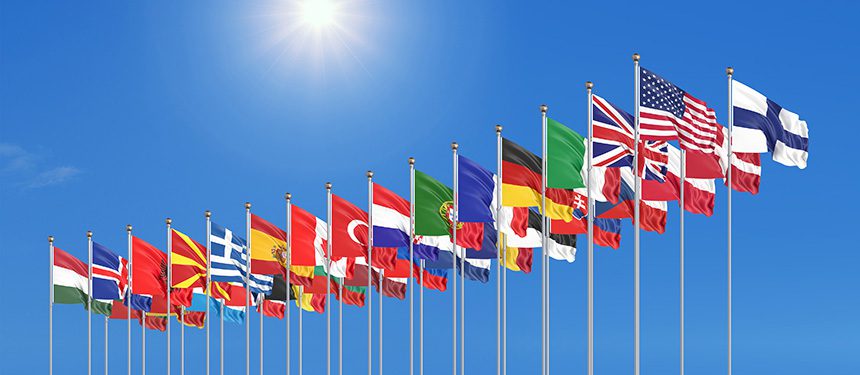Challenges for NATO and implications for business

In today’s volatile geopolitical landscape, NATO stands as a key force of stability and resilience, ensuring peace and security across the Euro-Atlantic region.
The NATO Summit in July was marked by key changes and challenges. We saw a change of leadership for NATO Europe, and a move to include Arab nations, who were invited to attend against the backdrop of the Gaza conflict. President Zelensky also attended, a reminder of the ongoing conflict between Ukraine and Russia. The summit took place during the US election cycle, a factor with potential to influence NATO’s future.
Key changes and challenges for NATO
Change in leadership
Mark Rutte, a respected European leader, has taken on the position of leadership in NATO Europe. While his home country, the Netherlands, has lagged in meeting its defence spending target of 2% of GDP, Rutte’s appointment is expected to maintain the current strategic direction of the Alliance. The continuity in leadership approach suggests that NATO’s adversaries are unlikely to perceive any significant shift in NATO’s stance.
The impact of the Ukraine war
The biggest challenge for NATO is the ongoing war in Ukraine. The Alliance faces the critical task of strengthening support for Ukraine to ensure long-term peace in the Euro-Atlantic region. This support extends beyond mere words to tangible actions aimed at defeating Russian aggression in Ukraine. While ‘the irreversible path’ for Ukraine to NATO membership was re-affirmed, the Alliance stopped short of a commitment to support Ukraine in the decisive defeat of Russia in Ukraine.
The Summit’s announcement of a $40 billion fund is a step in this direction, but more robust measures will be needed if Ukraine is to defeat Russia. Not only will Ukraine require the means to defend itself against Russian air attacks, but it will need support in building up its air, land, and other capabilities for offensive operations, and training its armed forces to generate the necessary combat units and formations. Additionally, Ukraine will need to be able to strike legitimate military targets within Russia using NATO-provided equipment.
The Gaza conflict
The invitation extended to Arab nations to attend the summit, set against the backdrop of the Gaza conflict, was a strategic move to foster dialogue and potential partnerships. However, this gesture is unlikely to bring about a swift resolution to the conflict. It does, however, provide a platform for key NATO leaders to engage with Arab counterparts, potentially laying the groundwork for future cooperation.
Potential new leadership in the US
The US political landscape is another critical factor influencing NATO’s future. President Biden’s decision not to run for re-election amid widespread criticism sets the stage for a possible return of Donald Trump to the presidency. Trump’s previous tenure was marked by controversial views on NATO’s value, and his return could challenge the Alliance’s cohesion and funding. The US provides essential strategic capabilities that are irreplaceable, underscoring the importance of stable American leadership for NATO’s effectiveness.
Security challenges related to the China/Russia relationship
The growing relationship between China and Russia presents another layer of complexity for NATO. While this issue warrants a detailed analysis in its own right, it is crucial to acknowledge the strategic implications of this alliance. Both nations represent significant geopolitical challenges, and their cooperation could complicate NATO’s strategic calculations and defence posture.
So how should businesses respond?
The decisions made at the NATO Summit have far-reaching implications for the global economy and businesses. Stability and security in the Euro-Atlantic region are foundational to economic growth and investment. Businesses must stay attuned to geopolitical shifts and NATO’s strategic decisions, as these factors influence market dynamics, supply chains, and investment climates.
Here are some key recommendations:
- Understand the situation and how it is changing. This means developing the intelligence capabilities needed to analyse the mass of open-source intelligence and make the necessary deductions for businesses. This can either be developed by training their own personnel or outsourcing the problem to a company like Healix to provide the necessary analysis.
- Establish a framework of risk that allows you to look at risk comprehensively and to understand the relationship between risks.
- Test company strategy and the plans which make up that strategy by wargaming. However, sophisticated a risk management process a company has; no-one can foretell the future. Wargaming allows companies and risk managers to test the resilience in a safe to fail environment.
NATO’s role in ensuring stability and resilience is crucial for both security and economic reasons. The decisions made by the Alliance impact global markets and business environments, underscoring the need for business leaders to stay informed and proactive. As NATO continues to adapt to new challenges, businesses must also evolve to thrive in an increasingly complex world.
Contact us at enquiries@healix.com to find out more about how we can support you.


